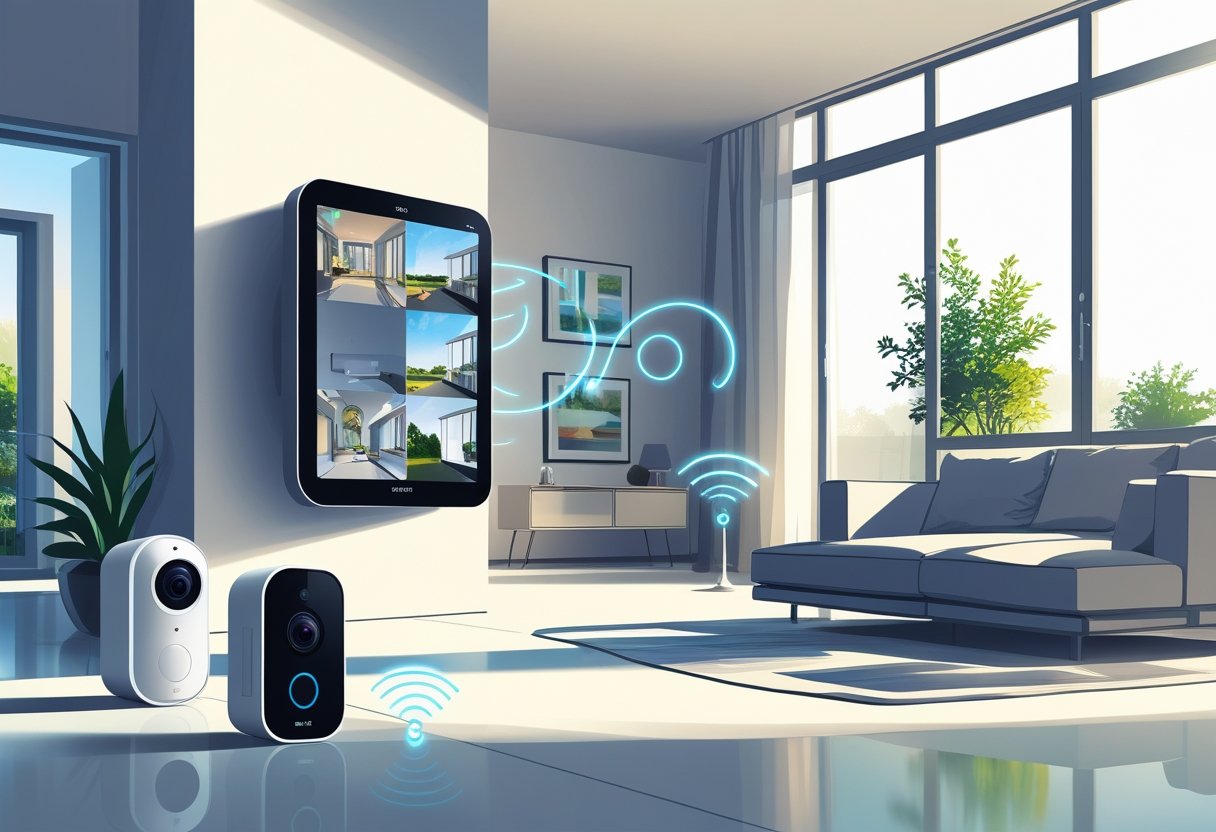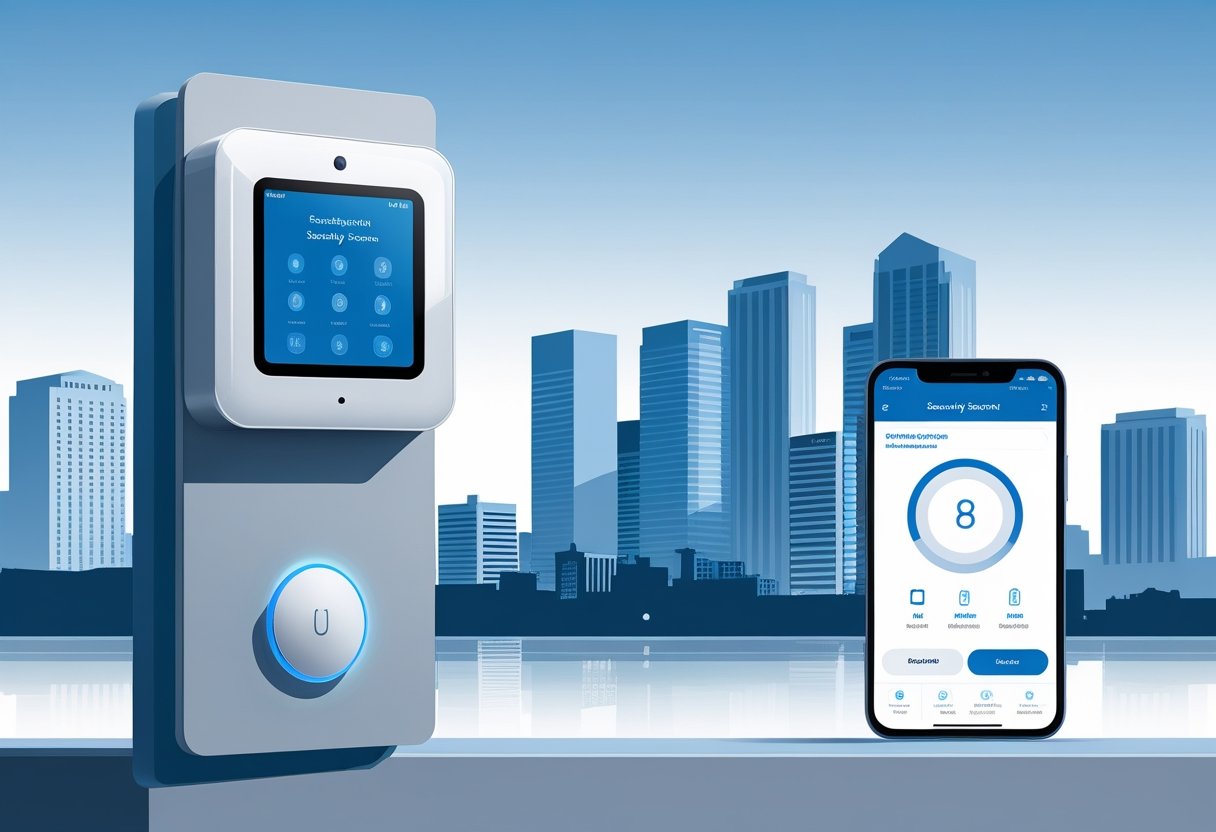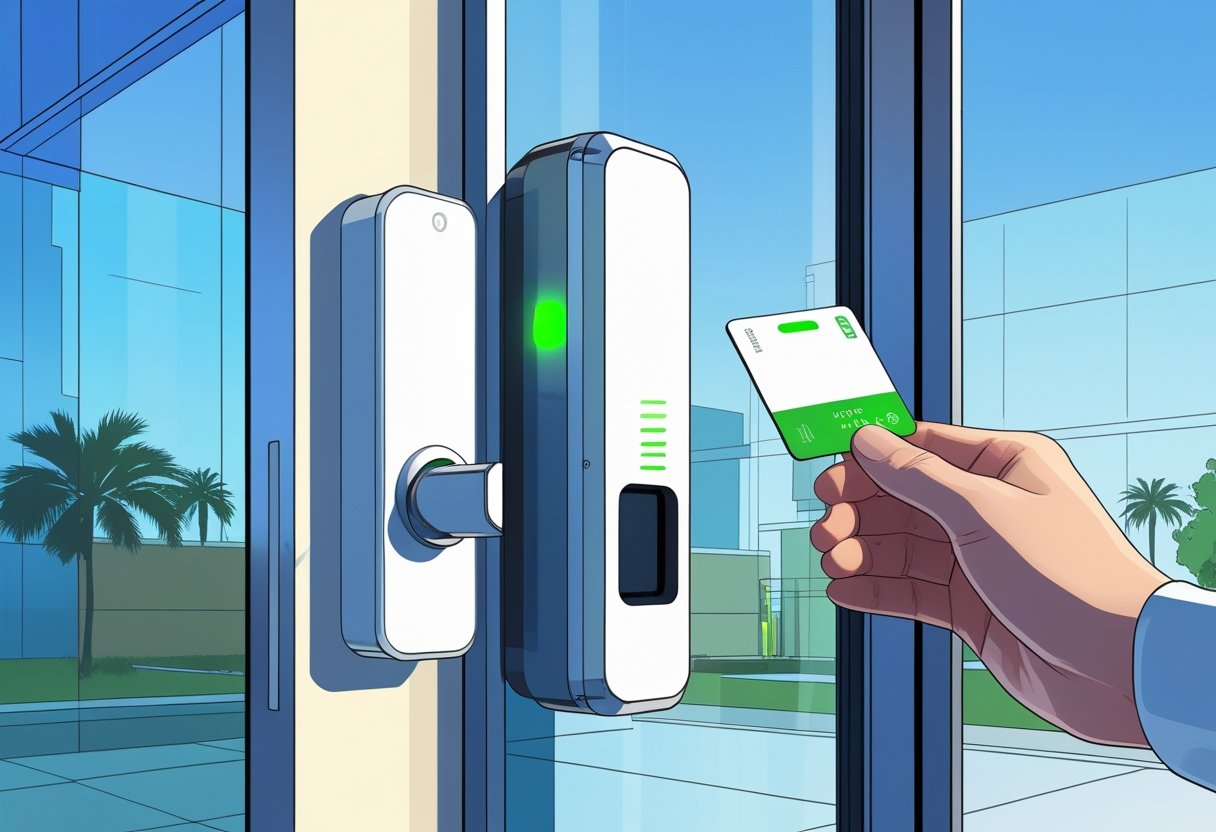Choosing the right security system for your home is crucial for safeguarding your family and property. Wireless home security systems with a monitor offer flexibility and ease of installation, allowing you to keep an eye on your home from virtually anywhere. These systems provide real-time monitoring, giving you peace of mind no matter where you are in the greater Houston area.
With advanced features like motion detection and night vision, a wireless security system ensures that you are alerted to any suspicious activities as they occur. The added benefit of having a monitor allows you to view live footage and access recorded videos with just a few clicks. This means you can respond quickly to any potential threats, ensuring the safety of your home.
Investing in a wireless home security system with monitor not only enhances your home’s security but also fits seamlessly into your lifestyle. Whether you are looking for a simple setup or a more comprehensive solution, there are options tailored to meet your specific needs in the greater Houston area.
How Wireless Home Security Systems With Monitor Work
Wireless home security systems with monitors provide an integrated solution to protect your property. These systems utilize a combination of sensors, cameras, and monitors, offering real-time visibility and alerts or notifications when security events occur.
Key Components of Wireless Home Security Systems
The primary components of a wireless home security system include a base station, wireless sensors, and monitors. The base station acts as the central hub, connecting various components together while providing power and data management.
Wireless sensors encompass motion sensors, door and window sensors, and cameras. These devices detect unauthorized access or movement within your premises, triggering alerts that can be sent to your monitor or smartphone. Monitors display live feeds from cameras and provide notifications, allowing you to keep an eye on your property.
Types of Monitors and Monitoring Methods
Monitors can vary in type and functionality. Some systems feature dedicated screens that display video feeds in real-time. Others opt for mobile application integration, allowing you to view footage directly from your smartphone. This flexibility enhances accessibility and user experience.
Monitoring methods also differ. You can choose self-monitoring, where you receive alerts and manage notifications directly, or professional monitoring services that provide 24/7 surveillance. Professional services often include immediate response to alarm triggers, offering peace of mind.
Wireless Communication and Connectivity
Wireless home security systems rely on advanced communication technologies. Most systems utilize Wi-Fi or cellular networks to connect devices efficiently. This connectivity ensures that your sensors and cameras can transmit data to the base station without physical wiring.
Some systems utilize encryption protocols to secure communication, protecting your data from unauthorized access. Motion sensors play a crucial role in this setup by detecting movement and transmitting alerts to the base station, ensuring timely responses to potential security threats.
Core Features and Monitoring Capabilities
Wireless home security systems with monitors offer a blend of essential features that enhance safety and convenience. Understanding these capabilities will help you choose a system that meets your needs.
Real-Time Video Monitoring
Real-time video monitoring is a crucial feature of wireless security systems. You can keep an eye on your home through live feeds from security cameras and video doorbells, accessible via a mobile app. These devices provide clear images and often include night vision capabilities for low-light conditions.
With outdoor security cameras, you can monitor entry points and outdoor spaces. This feature is essential for catching suspicious activity as it happens. Many systems even allow two-way audio, enabling you to communicate with visitors or deter intruders.
Professional and Self-Monitoring Options
When it comes to monitoring, you can choose between professional monitoring and self-monitoring options. Professional monitoring services often include 24/7 support, where trained personnel respond to alerts and dispatch emergency services when necessary.
On the other hand, self-monitoring allows you to control your system through a mobile app. This approach offers flexibility, as you receive real-time notifications and can assess video feeds directly. You might prefer self-monitoring if you value personal oversight and quick response to alerts.
Remote Access and Mobile Alerts
Remote access is a standout feature of modern wireless security systems. You can manage your security cameras, video doorbells, and other devices from anywhere using your smartphone. This means you can check your home while at work or on vacation.
Mobile alerts keep you informed about any activity detected by your system. Whether it's motion detection or doorbell alerts, these notifications are critical for staying updated. Many systems allow you to customize alert settings, ensuring you only receive notifications when necessary. This feature is especially beneficial in providing peace of mind, knowing you can respond promptly to any concerns.
Top Wireless Home Security Systems With Monitor
When selecting a wireless home security system with monitoring, options like SimpliSafe, Ring, and ADT present significant benefits. These systems offer effective features, reliable monitoring, and flexibility tailored to your home security needs.
SimpliSafe Home Security System
SimpliSafe provides a robust wireless home security solution designed for DIY installation. You can customize your system with various sensors, cameras, and alarms to fit your specific requirements.
Key features include:
- 24/7 Professional Monitoring: Available for a monthly fee, ensuring constant surveillance.
- No Long-Term Contracts: You can easily cancel or modify your plan as needed.
- Mobile App Control: Monitor your home remotely, receive alerts, and manage settings.
The transparent pricing model makes it easy to see what you're getting, with packages starting as low as $14.99 per month.
Ring Alarm and Ring Alarm Pro
Ring Alarm offers a versatile home security solution with an option for professional monitoring. This system integrates smoothly with other Ring devices, giving you a comprehensive home security ecosystem.
Key benefits include:
- User-Friendly App: Receive notifications and control your system from anywhere.
- Video Monitoring: With additional cameras, you can monitor both inside and outside your home.
- Flexible Plans: Professional monitoring starts at $10 per month, making it accessible for various budgets.
With the Ring Alarm Pro, you can enhance security with features like built-in backup internet, ensuring your system stays connected during outages.
ADT and Abode Options
ADT stands out with its extensive experience in the security industry and offers a range of customizable plans tailored to your needs.
Key aspects include:
- Professional Monitoring: Trusted 24/7 monitoring by trained professionals.
- Smart Home Integration: Works with devices like Amazon Alexa and Google Home for enhanced automation.
- Equipment Variety: A range of options from basic to sophisticated systems.
Abode, on the other hand, caters to those who prefer a more add-on approach. You can start with a starter kit and easily expand your system with additional sensors and cameras.
Both ADT and Abode emphasize user experience, with intuitive apps for managing your security system effectively.
Installation and Setup Process
Setting up a wireless home security system with a monitor involves critical steps whether you choose to do it yourself or hire professionals. Each option has distinct advantages tailored to your specific needs and technical comfort level.
DIY Installation Steps
DIY installation is a popular choice for many homeowners looking to save on costs. To get started, gather all necessary tools, including a screwdriver, drill, and measuring tape.
- Choose Locations: Identify strategic spots for sensors and cameras, like entry points and high-traffic areas. Ensure a clear line of sight for monitoring.
- Install the Control Panel: This is the hub of your system. Mount it in a central location, ensuring it’s accessible but out of reach of potential intruders.
- Attach Sensors and Cameras: Follow manufacturer instructions to install sensor units. Make sure they are securely mounted and functioning.
- Connect to Wi-Fi: Link your system to your home network. Follow the app instructions meticulously to ensure a smooth connection.
- Testing: Once everything is set up, test all components to confirm they’re operational and communicating with the control panel.
Professional Installation Services
Opting for professional installation brings a level of expertise that can be invaluable. In the greater Houston area, reputable services ensure that your system is flawlessly integrated with smart home devices and home automation.
- Consultation: A technician will assess your property and recommend a customized system that fits your security needs and lifestyle.
- System Installation: Professionals will handle everything from placing cameras to wiring sensors, ensuring optimal functionality and coverage.
- Integration: They can seamlessly integrate your security system with existing smart home devices, providing a unified interface for monitoring and management.
- Training & Support: After installation, the technician will walk you through the system operation and may provide ongoing support, which can be beneficial for troubleshooting.
Choosing the right installation method ensures your system is set up effectively, providing peace of mind and solid protection for your home.
Storage, Maintenance, and System Expansion
Understanding the options for storage, maintenance requirements, and how to expand your system is crucial for maximizing the effectiveness of your wireless home security system.
Local Storage and Cloud Storage Options
With a wireless home security system, you typically have two main storage options: local storage and cloud storage.
Local Storage involves saving video footage directly on a device like an SD card or a Network Video Recorder (NVR). This option allows quick access to recordings without relying on internet speeds. It's often cost-effective since you avoid monthly cloud fees. However, you'll need to monitor storage capacity and manually manage data.
Cloud Storage, on the other hand, allows you to save footage off-site via internet services. This option is convenient, offering remote access and automatic updates. There’s usually a subscription fee based on the storage amount you require and the length of time footage is stored. Ensure you select a provider with robust data encryption to protect your information.
Maintaining and Updating Your System
Regular maintenance is crucial to ensure your system operates optimally. Start by routinely checking battery life on all devices; most have indicators that alert you when replacements are needed. You should also test the functionality of all equipment, such as cameras and alarms, to ensure they respond correctly.
Keep your system's firmware up-to-date. Manufacturers often release updates to enhance security features and fix vulnerabilities. Consult your app or manufacturer’s website for notifications about updates, as failing to update can expose your system to risks.
Additionally, clean your cameras and sensors regularly to maintain clarity. Dust can accumulate and hinder performance, affecting your security capabilities.
Adding and Integrating New Devices
Expanding your security system can enhance your home’s protection. Most wireless systems allow for straightforward additions such as cameras, sensors, and smart lights.
When integrating new devices, ensure they are compatible with your existing network. Look for devices that support Z-Wave or Zigbee protocols, which commonly link to various systems effortlessly.
You can add elements over time as your budget allows. For example, start with outdoor cameras and incorporate indoor sensors later. This incremental approach allows you to tailor your security to your needs while keeping costs manageable.
Before purchasing, always confirm your system’s capacity for additional devices to avoid compatibility issues.
Key Considerations When Choosing a Wireless Home Security System With Monitor
When selecting a wireless home security system with monitoring capabilities, it's crucial to evaluate several key factors. These include the system's security and privacy features, its scalability and compatibility with your needs, and the associated costs and subscription models. Understanding these elements ensures you make an informed decision tailored to your requirements.
Security and Privacy
Your home security system must prioritize security and privacy. Look for wireless security systems that utilize encrypted communication to safeguard your data. High-resolution surveillance cameras should be standard, providing clear images to ensure reliable monitoring.
Consider features like facial recognition and motion detection, which enhance security. Systems with built-in two-way audio can facilitate communication during a potential threat.
Additionally, verify the privacy policies of the service. Ensure they comply with regulations and respect your data. Select providers that limit data sharing, guaranteeing that your information remains private while ensuring robust emergency response options.
Scalability and Compatibility
A wireless home security system should be scalable to accommodate your future needs. Consider whether you can easily add cameras or sensors as your home security needs evolve. Compatibility with smart home devices is beneficial for better integration.
Check if the system supports various protocols like Zigbee, Z-Wave, or Wi-Fi. This allows for seamless connections with other devices like smart locks and lights. Flexibility in system components enables customization according to your specific requirements.
Additionally, ensure the system can integrate with existing equipment if needed, providing versatility and adaptability in maintaining your home security.
Cost and Subscription Models
Cost is a significant factor when selecting a wireless home security system. Research whether the system's features justify the price tag. Look for transparent pricing without hidden fees.
Most security systems require a monthly subscription for 24/7 monitoring services. Compare different service plans, noting features like emergency response, cloud storage, and mobile access. Some systems offer tiered subscription models based on your needs.
Evaluate whether there are upfront costs for equipment and installation. Consider systems that offer protection without long-term contracts, providing flexibility should your circumstances change. Balancing features with affordability ensures you get the most value for your investment.
Frequently Asked Questions
In this section, you'll find specific answers to common questions related to wireless home security systems that include a monitor. These queries cover various aspects, from product options to performance comparisons.
What are the best outdoor wireless security camera systems that include a monitor?
For outdoor setups, consider models like the Reolink 4G LTE Camera System. It offers high-resolution video and comes with its dedicated monitor. Another option is the Lorex 4 Camera Wireless System, known for its robust security features and reliable performance.
Are there any battery-powered wireless security cameras that come with a dedicated monitor?
Yes, the Arlo Go Camera System features a battery-powered option with a dedicated monitor. This system is ideal for remote access and set up in areas without electrical outlets. It's important to ensure the monitor has sufficient battery life for continuous function.
Can I find a high-quality single wireless security camera system with a monitor for individual use?
Models like the Blink Indoor Camera System provide a single camera option paired with a user-friendly monitor. This system is perfect for individual monitoring needs and is easy to install, making it suitable for personal use in homes across the Greater Houston area.
What are my options for a security camera with a monitor that doesn't require WiFi?
For those seeking systems without WiFi dependence, the Swann Security Camera System is a solid choice. It operates over a wired connection and has a monitor for direct viewing. This setup ensures consistent performance even in areas with poor internet connectivity.
How do wired security camera systems with a monitor compare to wireless ones in terms of reliability and performance?
Wired systems generally offer more reliable connections and less latency compared to their wireless counterparts. However, wireless systems allow for more flexible installation. Each has its advantages, so your choice should depend on your specific needs and installation environment.
Are there any wireless security camera systems that can support up to 10 cameras and include a monitor?
Yes, the Amcrest 1080P Wireless Security Camera System can support up to 10 cameras while providing an included monitor for seamless oversight. This setup is suitable for larger properties needing extensive coverage throughout the Greater Houston area, ensuring comprehensive monitoring.
.svg)



.svg)


.svg)



